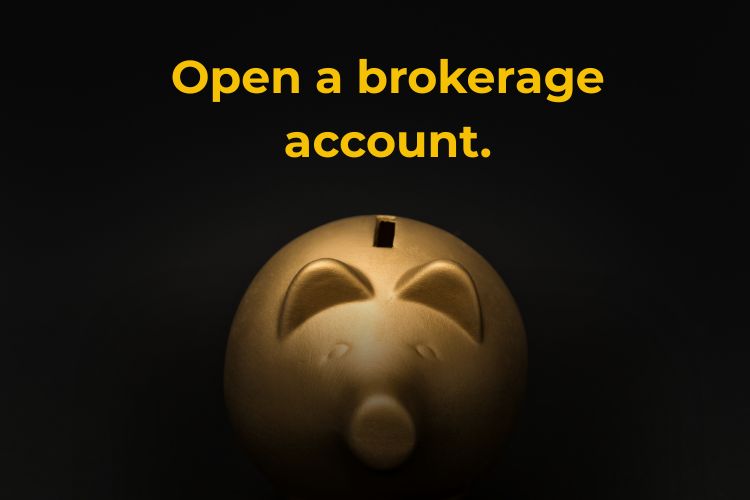Best United States ETFs for Beginners. If you’re new to investing, ExchInvesting can feel overwhelming for beginners — especially when it comes to choosing between thousands of stocks and funds. That’s where ETFs (Exchange-Traded Funds) make the process simple, safe, and effective.
Instead of picking individual stocks (which can be risky and time-consuming), ETFs allow you to buy a basket of stocks or bonds with a single purchase. This gives you instant diversification, lower fees, and exposure to entire markets or sectors.
In this guide, you’ll discover:
- The best U.S. ETFs for beginners
- Why ETFs are ideal if you’re just starting out
- Step-by-step instructions to invest in ETFs
- Tips for building a low-risk, high-growth portfolio
Best United States ETFs for Beginners. Why ETFs Are Ideal for Beginners
Many new investors wonder: Should I buy individual stocks or ETFs?
For most beginners, ETFs are a smarter choice because they combine safety, simplicity, and strong performance.
Here’s why ETFs are perfect if you’re new to investing:
- ✅ Diversification – Own dozens or even thousands of stocks with one purchase.
- ✅ Low Cost – Expense ratios are typically below 0.10%, much cheaper than mutual funds.
- ✅ Liquidity – ETFs trade just like stocks during market hours.
- ✅ Transparency – Most ETFs disclose their holdings daily.
- ✅ Simplicity – No need to research hundreds of companies; you buy the market itself.
👉 Instead of trying to “beat the market” by stock-picking, beginners can simply buy the market through ETFs and let long-term growth work in their favor.
What Makes a Great Beginner ETF?
Not every ETF is created equal. Beginners should look for funds that are broad, safe, and low-cost.
Best United States ETFs for Beginners. Key features of the best ETFs for beginners:
- Broad exposure (entire markets, not narrow sectors)
- Low expense ratio (ideally below 0.10%)
- High liquidity (easy to buy and sell anytime)
- Strong historical performance (tracking a trusted index)
- Simple structure (no leveraged or exotic ETFs)
See more: Stocks vs. Investment Funds: Which One Should You Choose and Why?
The 5 Best U.S. ETFs for Beginners
Best United States ETFs for Beginners. Here are the top ETFs that beginners should consider:
1. Vanguard Total Stock Market ETF (VTI)
- Ticker: VTI
- Expense Ratio: 0.03%
- Holdings: 4,000+ U.S. companies (large, mid, small-cap)
✅ Why it’s great: VTI invests in the entire U.S. stock market — from giants like Apple and Microsoft to smaller growth companies. It’s a one-stop option for long-term investors.
2. Vanguard S&P 500 ETF (VOO)
- Ticker: VOO
- Expense Ratio: 0.03%
- Holdings: 500 largest U.S. companies
✅ Why it’s great: Tracks the S&P 500 Index, often called the “heart of the U.S. economy.” Ideal if you want to own America’s strongest and most stable businesses.
3. iShares Core MSCI Total International Stock ETF (IXUS)
- Ticker: IXUS
- Expense Ratio: 0.07%
- Holdings: 4,300+ companies outside the U.S.
✅ Why it’s great: Provides global diversification. If you want exposure beyond the U.S., IXUS covers Europe, Asia, and emerging markets.
4. iShares Core U.S. Aggregate Bond ETF (AGG)
- Ticker: AGG
- Expense Ratio: 0.03%
- Holdings: U.S. government and corporate bonds
✅ Why it’s great: Bonds add stability and income to a portfolio. AGG helps balance stock market volatility.
5. Vanguard Real Estate ETF (VNQ)
- Ticker: VNQ
- Expense Ratio: 0.12%
- Holdings: U.S. real estate investment trusts (REITs)
✅ Why it’s great: Gives exposure to commercial real estate and provides dividend income. Real estate adds another layer of diversification.

Best United States ETFs for Beginners. How to Start Investing in ETFs Step by Step
Step 1: Open a Brokerage Account
Choose beginner-friendly brokers such as:
- Fidelity
- Charles Schwab
- SoFi Invest
- Robinhood
- E*TRADE
👉 Most of these platforms offer commission-free ETF trading.
Step 2: Fund Your Account
Best United States ETFs for Beginners. Deposit money to get started. Even $50–$100 is enough if the broker offers fractional shares.
Step 3: Choose Your ETFs
A simple beginner portfolio could look like this. Best United States ETFs for Beginners:
- 60% VTI (U.S. total stock market)
- 20% IXUS (international exposure)
- 20% AGG (bonds for stability)
This gives you a diversified, low-cost portfolio that balances growth and safety.
Step 4: Invest Regularly (Dollar-Cost Averaging)
Instead of investing all at once, put in a fixed amount monthly (e.g., $100).
This strategy is called Dollar-Cost Averaging (DCA) and helps reduce the impact of market volatility.
👉 Many brokers let you automate ETF purchases, making it even easier.
Step 5: Hold for the Long Term
Best United States ETFs for Beginners. The most powerful secret of ETF investing is time.
The longer you hold, the more your investments grow through compounding.
📌 Example: Investing $200/month into VTI for 20 years could grow into over $100,000 depending on market performance.
See more: Invest in ETFs in The global market: the complete guide for beginners.
Tips for Choosing the Best ETFs for You
- Keep it simple – 2–3 ETFs are enough for most beginners.
- Check holdings – Make sure you understand what’s inside the ETF.
- Watch fees – Even 0.20% is expensive compared to 0.03%.
- Avoid niche ETFs – Stay away from leveraged, thematic, or exotic ETFs.
- Think long term – Don’t chase short-term returns.
Images (SEO Example). Best United States ETFs for Beginners.
- Image 1: Person reviewing ETFs on laptop
- Alt text: Beginner investor researching the best U.S. ETFs for portfolio diversification
- Image 2: ETF growth chart illustration
- Alt text: Long-term growth of U.S. ETFs for beginners using dollar-cost averaging
Final Thoughts: ETFs Make Investing Easy and Powerful
If you’re just starting your investment journey, the best U.S. ETFs for beginners provide the safest path to build wealth.
By focusing on broad, low-cost funds like VTI, VOO, and IXUS, and adding a mix of bonds (AGG) or real estate (VNQ), you can create a portfolio that grows steadily with less risk.
Best United States ETFs for Beginners. Start small, invest consistently, and think long term. With patience, ETFs will help you achieve financial freedom.
FAQ – Best U.S. ETFs for Beginner Investors.
What is the best ETF for beginners to start investing?
Best United States ETFs for Beginners. The Vanguard Total Stock Market ETF (VTI) is often recommended for beginners. It offers broad exposure to the entire U.S. stock market with a very low expense ratio of 0.03%.
Are ETFs safer than individual stocks for beginners?
Yes. ETFs provide instant diversification by investing in many stocks at once, which reduces risk compared to buying individual stocks. They are ideal for passive, long-term investors.
How much money do I need to start investing in ETFs?
Best United States ETFs for Beginners. You can start with as little as $50–$100, especially if your broker supports fractional shares. Many platforms like Fidelity, Robinhood, and SoFi Invest offer commission-free ETF trading.
Should beginners invest in more than one ETF?
Yes, but keep it simple. Beginners often start with 1–3 ETFs for diversification — such as a U.S. market ETF (like VTI), an international ETF (like IXUS), and a bond ETF (like AGG).
What is the difference between VTI and VOO?
VTI covers the total U.S. stock market (large-, mid-, and small-cap companies), while VOO tracks the S&P 500 (only large-cap companies). Both are low-cost and beginner-friendly.

